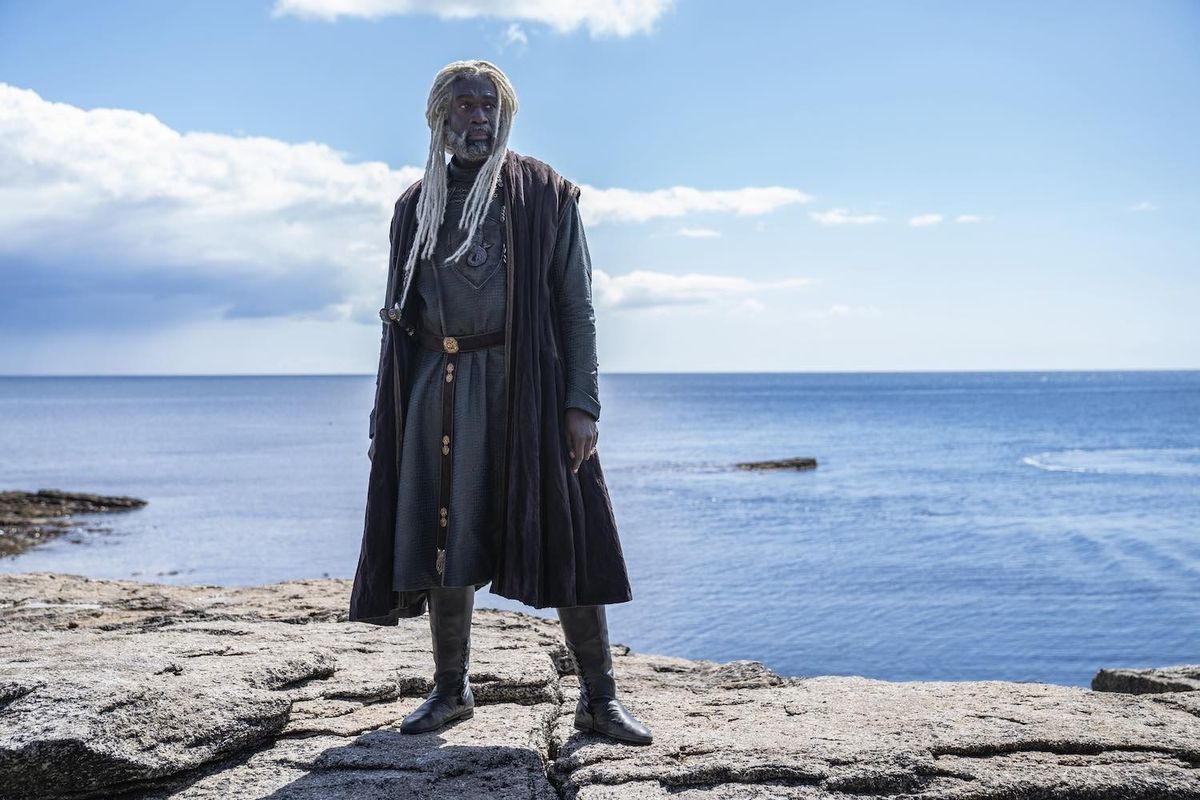
House Of The Dragon Black Velaryons Game Of Thrones TV Universe
Photo Credit: Ollie Upton/HBO
To continue reading
Create a free account or sign in to unlock more free articles.
By continuing, you agree to the Terms of Service and acknowledge our Privacy Policy
Register
The content is free, but you must be subscribed to Okayplayer to continue reading.
THANK YOU FOR SUBSCRIBING
Join our newsletter family to stay tapped into the latest in Hip Hop culture!
Login
To continue reading login to your account.
Forgot your password?
Please enter the email address you use for your account so we can send you a link to reset your password:

So much of Game of Thrones and its prequel House of the Dragon has had us grappling with what it means to live in a world where our social structures are dictated by violent patriarchy more interested in conquest than collaboration. The role Black characters could play in such a world was seldom shown in the Game of Thrones series outside of characters like Missandei and Greyworm, whose story arcs primarily revolved around Daenerys Targaryen.
However, the Black characters of House of the Dragon, which wrapped its first season on HBO last night, are not suffering from that same fate, as co-creator and showrunner Ryan Condal found a smart way to bring a more representative ensemble to Westeros, while still keeping in line with George R.R. Martin's vision.
Through the portrayal of House Velaryon, one of the oldest (and wealthiest) houses in Westeros that has a lineage as significant in the Valyrian race as House Targaryen, Black characters are not just pawns to be moved on the chessboard of who takes king or queen. Instead, characters like Lord Corlys Velaryon (portrayed by Steve Toussaint) have their own desires and stakes set up within this world that affect their decisions and actions, beyond following behind a white central character fighting for the throne.
Condal made it very clear that the decision to cast more diverse actors was not a decision he made “to tick a box or be seen as progresive.” In an interview with the Wrap, Condal shared that casting the Velaryons as Black wasn’t only an opportunity to create a more diverse cast, but a callback to the fact that Martin originally considered making them Black in the books. “If we believe in dragons, and shapeshifters and dire wolves, we can believe everybody in the story is not white,” he said.
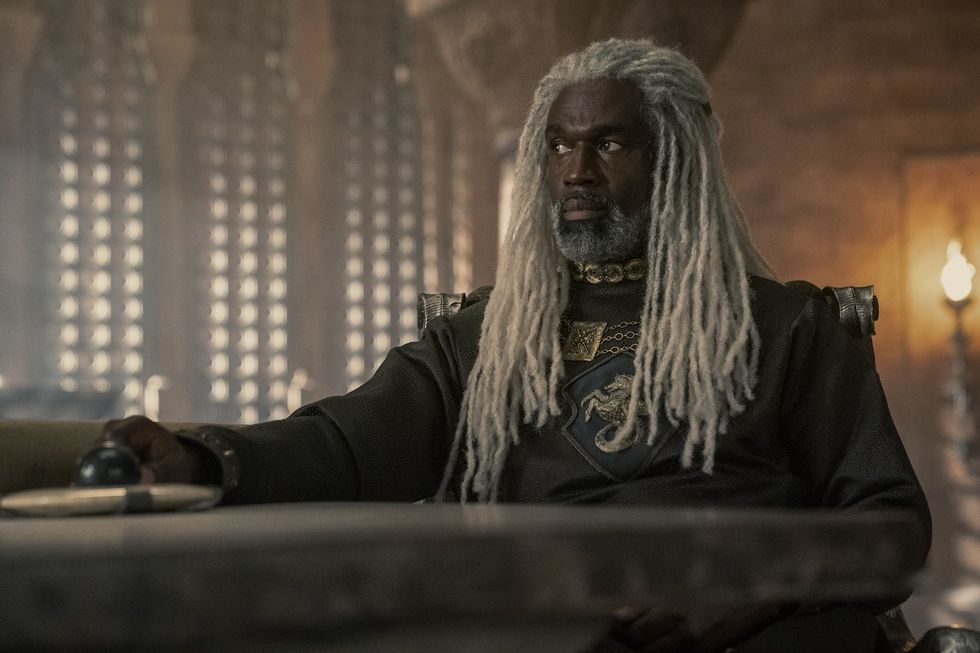
Unfortunately, for some fans, that hasn’t been the case, as the decision to cast Toussaint as the conniving military commander of Corlys was initially met with backlash. Toussaint addressed criticisms claiming his character shouldn’t have been a Black man (it’s worth noting the Sea Snake’s skin color is never mentioned in the books) shortly after the series premiered, saying in an interview with Men’s Health: “It seems to be very hard for people to swallow. They are happy with a dragon flying. They’re happy with white hair and violet-colored eyes, but a rich Black guy? That’s beyond the pale.” It was another instance in a long-running problem with ignorant (and likely racist) fans, who always complain about a character’s complexion being changed and missing the main point. Are these actors able to portray the Velaryons as a powerful force to be reckoned with in Westeros? As a screen veteran, Touissant has done that in every aspect with Corlys.
As the Sea Snake, Corlys has built his house into a powerful seat, not just being one of the wealthiest to exist, but also having the largest fleet in the world, too. Whether trying to merge the Targaryan and Velaryon houses through marriage, or vying that his wife Rhaenys Targaryen should've been queen, Corlys' interests do not lie solely in some devotion to the crown. Instead, he’s focused on what's best for his house and Driftmark, the land he owns.
When King Viserys makes the decision to marry his daughter Rhaenyra Targaryan off to Laenor Velaryon (Corlys’ son portrayed by John MacMillan) to join their houses, the VelaryonHouse walks into the Red Keep as a unit in front of the other powerful houses of Westeros. From their clothes to their guardsmen, they have a level of wealth and strength that they make sure to show to all who are watching. It becomes clear to anyone not happy with Viserys’ decision to name Rhaenyra as his heir that they'd be best to keep those comments to themselves, as her marrying a Velaryon will grant her that much more protection. This is a long way away from Greyworm or Missandei, who were slaves before being freed by Daenerys and joining her forces.
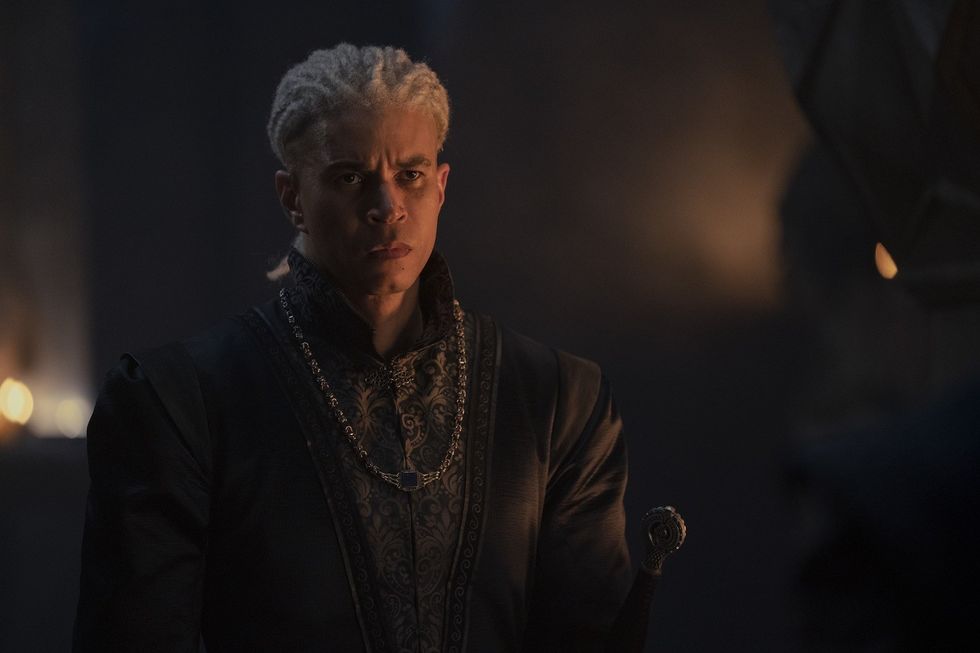
Now, is the show doing something revolutionary for the representation of Black characters? Not really. Two of the Black characters we've been introduced to — Laena and Vaemond (portrayed by Nanna Blondell and Wil Johnson, respectively) — are dead, with a third, Laenor, faking his death. Even Lord Corlys was nowhere to be found for several episodes when his character was injured off-screen. Outside of the Velaryons, Black characters either don't exist or play no meaningful role in the show to take note of.
Honestly though, in a show where storylines revolving around assault, murder, and incest are regular occurrences, Black characters having little to no involvement with certain parts of the plot is OK. Seeing Black dragonriders has still been an exciting development for viewers, and the storyline (for the most part) has been unaffected by the change in appearance of Corlys and other members of House Velaryon. They don't feel like they're in the show for diversity's sake, and they all play a role that pushes the story forward.
They are also treated the same as any other character in this world, which at times is pretty gruesome. An example of this is Lord Vaemond Velaryon, Corlys’ brother, losing his head to Daemon's sword when he refuses to accept Rhaenyra's son as the heir of Driftmark, claiming him to be illegitimate.
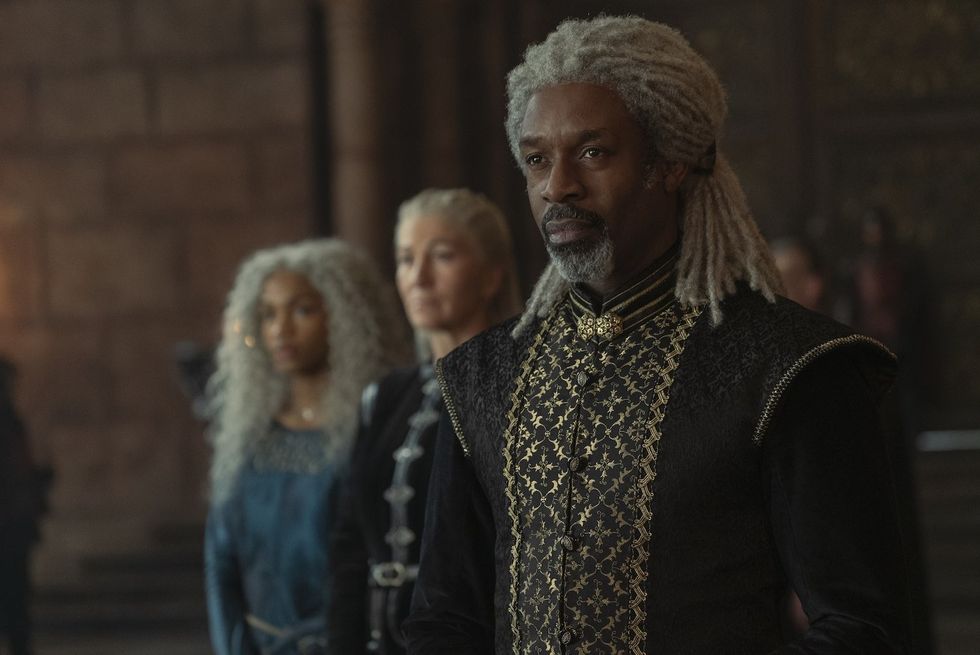
Perhaps the biggest frustration has been how fast the storyline around these characters has been forced to move the plot forward to more eventful moments from the books. After episode five “We Light the Way,” we're given a major time jump that sees many of the young characters get older. While we're introduced to characters like the wise dragon rider Laena Velaryon, we don’t get much time with her as a fleshed-out adult, the character dying in the following episode after she makes the decision to have her dragon light her on fire instead of dying in labor. We’re given slightly more time with her brother, an older Laenor Velaryon, but he also disappears after faking his death so that he can be with his lover, and Rhaenyra can marry Daemon. While we’re introduced to the desires of these characters and what makes them their own person, they are essentially used as plot devices and a generic afterthought at that, resulting in character developments that viewers will never get to witness.
Laena in particular could’ve brought something unique to the show in that she doesn’t depend on brute force or money to impact the people of Westeros. There’s also the fact that she rode the largest and oldest dragon in Westeros, Vhagar, up until her death. How did Laena come to be Vhagar’s rider in the first place? How did their bond become so strong that the dragon isn’t just hesitant but sad to kill her when she commands Vhagar to do so? Unfortunately, viewers will never know, with Vhagar now likely going to be a source of contention between Laena’s daughters Baela and Rhaena and Prince Aemond, when he claims the dragon before either of them can.
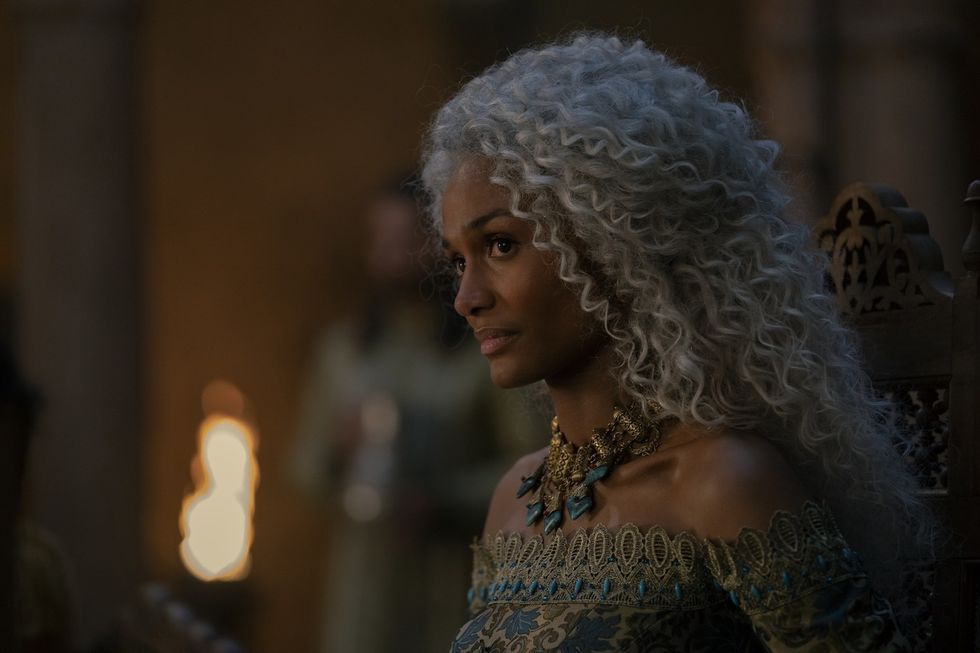
With the season now over, viewers aren’t going to see a deep dive into any of the remaining Velaryon’s stories, but this is something we can hopefully see changed for season two. Laena and Laenor may no longer be with us, but Baela and Rhaena are. The show has also managed to allude to other characters outside of the more privileged who are facing other forms of oppression like class, as episode nine “The Green Council” showed viewers with children forced to fight each other as entertainment. With the second season, it’ll be interesting to see if race plays into this if at all? Our interactions so far with non-white characters has mostly been those with money and some sort of power in their own right. But what does this mean for people of color who are commoners?
It’s been refreshing to see representation in the Velaryon’s, but with the impending war between the Greens and the Blacks coming, the question around the role Black characters could play in such a world should go beyond basically one family. As new characters are sure to be introduced in the next season, let’s hope House Velaryon isn’t where the inclusive casting ends.
—
Ashley K. Smalls is a Ph.D. student who studies and writes about race, media, and digital fandom. You can talk pop culture with her on Twitter and TikTok at: @ashleyksmalls